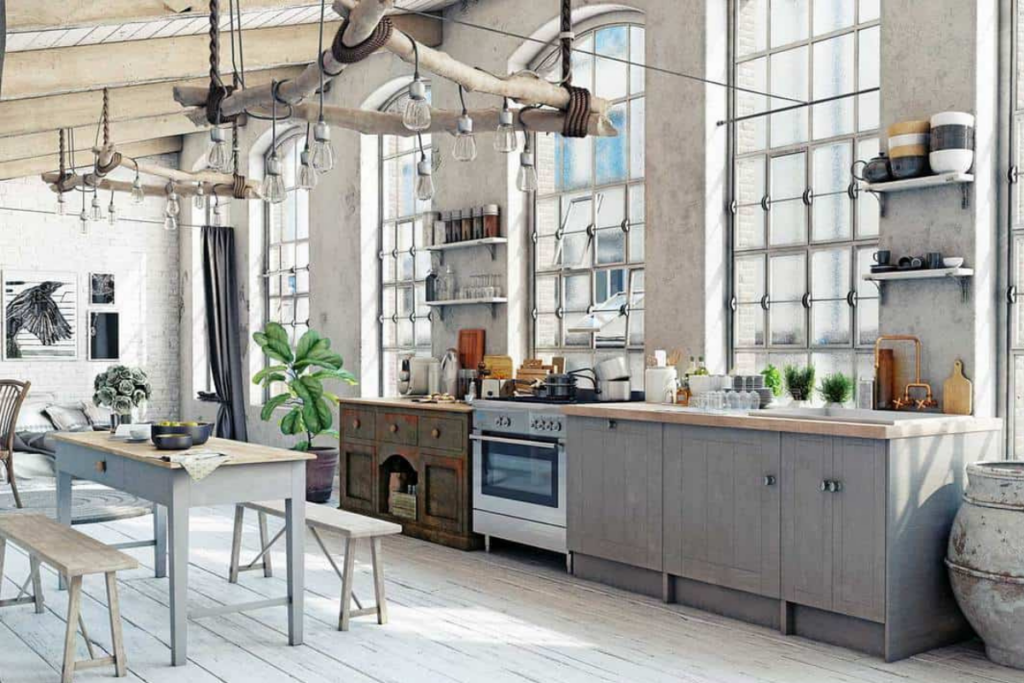Introduction to Mixing Cabinet Front Styles
Mixing cabinet front styles in a kitchen might sound like a bold move, but it’s a trend that’s gaining traction for its ability to add personality and depth. When I renovated my own kitchen last year, I agonized over whether to pair sleek slab cabinets with classic shaker fronts—spoiler alert: it worked beautifully. In this guide, we’ll explore how to mix cabinet styles effectively, ensuring a cohesive, stylish, and functional kitchen.
Why Mix Cabinet Front Styles?
Combining different cabinet front styles can transform a kitchen from predictable to extraordinary, blending textures, colors, and designs for a custom look. I learned this firsthand when I saw a friend’s kitchen with glass-front uppers and solid wood lowers—it felt both modern and timeless. This approach allows homeowners to express creativity while meeting practical needs.
The Appeal of Eclectic Design
Eclectic kitchens balance contrasting elements to create visual interest without chaos. Mixing cabinet styles offers flexibility, letting you highlight focal points or define zones. It’s perfect for those who love variety but want a harmonious space.
Practical Benefits
Beyond aesthetics, mixed cabinet fronts can address functional needs. For example, glass fronts showcase dishes, while solid panels hide clutter. This mix can also save costs by using premium materials selectively.
Understanding Cabinet Front Styles
Before mixing, it’s crucial to know the main cabinet front styles. Each has a distinct vibe, and understanding them helps you pair wisely. My own kitchen experiments taught me that not all combinations work—here’s a breakdown.
Shaker Cabinets
Shaker fronts feature a simple, five-piece design with a flat panel and square edges, evoking a timeless, versatile look. They’re ideal for traditional or transitional kitchens and pair well with modern styles.
Slab Cabinets
Slab fronts are flat, seamless panels with a sleek, minimalist aesthetic. Perfect for modern or Scandinavian kitchens, they contrast beautifully with ornate or textured styles.
Glass-Front Cabinets
Glass fronts, whether clear or frosted, add an open, airy feel, often used for upper cabinets. They’re great for displaying decor but require organized interiors.
Raised-Panel Cabinets
Raised-panel doors have a central panel that protrudes, giving a classic, elegant look. They suit traditional kitchens but can feel heavy if overused.
Beadboard Cabinets
Beadboard fronts feature vertical grooves, adding a cozy, cottage-like charm. They work well as accents in eclectic or farmhouse designs.
How to Mix Cabinet Front Styles Successfully
Mixing cabinet fronts is an art, but with a few guidelines, you can nail the look. My kitchen’s shaker-and-slab combo only worked after I learned to balance contrast and cohesion. Here’s how to do it right.
Stick to a Unified Color Palette
A cohesive color scheme ties different styles together. Use one or two colors across all cabinets, like white shaker uppers with navy slab lowers, for harmony. Neutral tones are safest for beginners.
Create Visual Balance
Distribute styles thoughtfully—pair bold fronts (like raised-panel) with simpler ones (like slab) to avoid overwhelming the space. I used glass fronts sparingly on uppers to keep my kitchen airy.
Use Zones to Define Styles
Assign styles to specific areas, like shaker on lowers and glass on uppers, to create functional zones. This approach, seen in a neighbor’s kitchen, makes the space feel organized and intentional.
Incorporate Consistent Hardware
Matching hardware, like matte black knobs or brass pulls, unifies disparate styles. I swapped mismatched handles for sleek pulls, and it instantly tied my cabinets together.
Test with Samples
Before committing, order cabinet door samples from retailers like Home Depot or Lowe’s. Testing in your space ensures the mix feels right.
Popular Combinations of Cabinet Front Styles
Not sure where to start? These tried-and-true pairings, inspired by real kitchens I’ve seen or designed, offer inspiration for any style.
Shaker and Slab
Shaker uppers with slab lowers create a modern-traditional blend, balancing warmth and sleekness. This combo worked in my kitchen, giving it a fresh yet cozy vibe.
Glass and Solid Panels
Glass-front uppers paired with solid shaker or raised-panel lowers offer openness while hiding clutter below. It’s perfect for small kitchens needing a spacious feel.
Beadboard and Shaker
Beadboard on an island with shaker cabinets elsewhere adds farmhouse charm without overwhelming the space. I saw this in a friend’s cozy cottage kitchen.
Comparison of Popular Combinations
| Combination | Style Vibe | Best For |
|---|---|---|
| Shaker + Slab | Modern-traditional | Versatile, timeless kitchens |
| Glass + Solid Panels | Open, airy | Small or display-focused spaces |
| Beadboard + Shaker | Rustic, cozy | Farmhouse or cottage kitchens |
Pros and Cons of Mixing Cabinet Front Styles
Pros
- Unique Aesthetic: Creates a custom, one-of-a-kind kitchen.
- Functional Flexibility: Different fronts serve specific purposes (e.g., glass for display).
- Cost Savings: Use expensive materials selectively, like glass only on uppers.
Cons
- Risk of Clutter: Too many styles can look chaotic without careful planning.
- Higher Design Effort: Requires more thought to achieve cohesion.
- Resale Concerns: Eclectic designs may not appeal to all buyers.
Tools and Resources for Mixing Cabinet Fronts
Designing a mixed-style kitchen requires the right tools and inspiration. I relied on online visualizers and local showrooms to perfect my design—here’s what you need.
Design Tools
- RoomSketcher: A free app to visualize cabinet layouts (RoomSketcher).
- IKEA Kitchen Planner: Budget-friendly tool for testing combinations.
- Canva: Create mood boards to pair styles and colors.
Where to Buy Cabinets
- IKEA: Affordable, customizable options for shaker and slab fronts.
- Home Depot: Wide range of styles, including glass and raised-panel.
- Local Cabinetmakers: Custom designs for unique combinations.
Professional Help
Hiring a designer can ensure a cohesive look. Check Houzz for local pros or inspiration galleries.
Tips for a Cohesive Mixed-Style Kitchen
I learned these tips through trial and error, and they’ll help you avoid common pitfalls while mixing cabinet fronts.
- Limit Styles: Stick to two or three styles to avoid a cluttered look.
- Repeat Elements: Use matching countertops or backsplashes to tie styles together.
- Consider Scale: In small kitchens, use simpler styles like shaker to avoid overwhelm.
- Test Lighting: Lighting affects how cabinet colors and textures appear—test under natural and artificial light.
Common Mistakes to Avoid
Mixing cabinet fronts can go wrong without careful planning. My first attempt at mixing styles looked like a design yard sale—here’s what to steer clear of.
- Overloading Styles: Too many fronts (e.g., shaker, slab, and beadboard) create chaos.
- Ignoring Proportions: Pairing heavy raised-panel lowers with delicate glass uppers can feel unbalanced.
- Mismatched Finishes: Mixing warm and cool tones without a unifying element looks disjointed.
- Skipping Samples: Committing without testing can lead to costly regrets.
People Also Ask (PAA) Section
Can you mix different cabinet styles in a kitchen?
Yes, mixing cabinet styles like shaker and slab can create a unique, cohesive look if unified by color, hardware, or zoning. Plan carefully to avoid a cluttered appearance.
Should upper and lower cabinets match?
They don’t have to match. Different styles or colors for upper and lower cabinets can define zones and add visual interest, as long as they complement each other.
Can you mix modern and traditional cabinets?
Absolutely. Pairing modern slab cabinets with traditional shaker or raised-panel fronts creates a balanced, transitional style popular in eclectic kitchens.
How do you make mixed cabinets look cohesive?
Use a unified color palette, matching hardware, and consistent countertops or backsplashes. Limiting styles to two or three also ensures harmony.
Mixing Cabinet Styles on a Budget
You don’t need a massive budget to mix cabinet fronts. I transformed my kitchen on a tight budget by refinishing existing cabinets and adding new doors selectively.
Refinish Existing Cabinets
Paint or reface older cabinets to create a new style, like turning raised-panel into shaker with flat-panel inserts. DIY kits from Home Depot start at $100.
Mix with Ready-to-Assemble (RTA) Cabinets
RTA cabinets from CabinetNow offer affordable shaker or slab options, letting you mix styles without breaking the bank.
Use Open Shelving
Replace some upper cabinets with open shelves for a modern twist, pairing with solid lowers. This saved me hundreds during my renovation.
Real-Life Examples of Mixed Cabinet Styles
Seeing mixed styles in action can spark ideas. Here are examples from kitchens I’ve visited or designed.
Modern Farmhouse Blend
A friend’s kitchen paired white shaker uppers with a navy beadboard island, creating a cozy yet contemporary space. Brass pulls tied it together.
Urban Loft Look
An urban loft I toured used slab lowers in matte black with glass-front uppers, showcasing sleek dishware against a brick backsplash.
Transitional Elegance
A designer I worked with combined raised-panel lowers with flat-panel uppers in a soft gray, achieving timeless sophistication.
FAQ Section
Can you mix cabinet styles in a small kitchen?
Yes, but stick to two styles (e.g., shaker and glass) and a neutral palette to keep the space open and cohesive.
Is it cheaper to mix cabinet styles?
It can be, if you use premium materials like glass selectively and reface existing cabinets for other areas.
How do I choose cabinet styles to mix?
Consider your kitchen’s overall style (modern, traditional, etc.), then pick complementary fronts like shaker and slab, testing with samples first.
Can I mix cabinet colors and styles?
Yes, combining colors (e.g., white uppers, navy lowers) with different styles adds depth, but unify with matching hardware or countertops.
Where can I find inspiration for mixing cabinet styles?
Browse Houzz, Pinterest, or kitchen showrooms for ideas, and use design tools like RoomSketcher.
Conclusion
Mixing cabinet front styles in the same kitchen is not only possible but can elevate your space to new heights of style and function. With careful planning, a unified palette, and a touch of creativity, you can craft a kitchen that’s uniquely yours. Whether you’re pairing shaker with slab or glass with beadboard, the key is balance and intention. So, grab some samples, test your vision, and create a kitchen that tells your story.


